
How to Order Ramen in Japan: From Noodle Firmness to Broth Choices
Ramen is one of Japan’s most beloved dishes, known for its flavorful broths, chewy noodles, and a wide variety of toppings. Ordering ramen in Japan can be an exciting experience, but the options may seem overwhelming to newcomers. From choosing your preferred noodle firmness to selecting the perfect broth, understanding these choices can enhance your ramen experience and help you enjoy this classic Japanese dish like a local.
This guide covers everything you need to know about ordering ramen in Japan, including popular broth types, noodle firmness, common toppings, and ordering tips to make the most of your meal.
Contents
1. Types of Ramen Broth
Ramen broth is the heart of the dish, and each type has a distinct flavor profile. Here are the four main types of ramen broth:
Shoyu (Soy Sauce)
Shoyu ramen is a soy sauce-based broth that is often clear and brown in color. It has a balanced, savory flavor that complements a variety of toppings. Originating from Tokyo, shoyu ramen is one of the most popular types in Japan, often served with sliced pork, green onions, and bamboo shoots.
Miso (Fermented Soybean Paste)
Miso ramen, originally from Hokkaido, features a rich, slightly creamy broth made from fermented soybean paste. This broth has a hearty and slightly sweet taste, making it a perfect choice during colder months. Miso ramen is commonly topped with corn, butter, bean sprouts, and green onions, reflecting Hokkaido’s local ingredients.
Shio (Salt)
Shio ramen is a lighter, salt-based broth that often appears clear and has a delicate flavor. It is usually made with chicken, fish, or seaweed, resulting in a mild yet savory taste. Shio ramen is often topped with lean pork, fish cakes, and vegetables, allowing the subtle flavors of the broth to shine.
Tonkotsu (Pork Bone)
Tonkotsu ramen, originating from Kyushu, is known for its thick, creamy, and rich broth made by simmering pork bones for hours. This process releases collagen and fats, creating a deep, umami flavor. Tonkotsu ramen is typically topped with green onions, pickled ginger, and sesame seeds, with slices of fatty pork that add to its richness.
2. Noodle Firmness Options
Noodle texture is a key part of the ramen experience, and many ramen shops allow you to choose your preferred firmness. Here are the most common levels of noodle firmness:
Yawa (Soft)
Yawa, or soft noodles, have a tender and slightly chewy texture. This option is ideal for those who prefer noodles that absorb more broth, resulting in a milder flavor experience.
Futsu (Regular)
Futsu, or regular firmness, is the standard noodle texture, offering a balanced bite that complements most broths. This is a good choice for first-time ramen eaters who want a traditional noodle texture.
Kata (Firm)
Kata noodles are firm and provide a satisfying chew, which contrasts nicely with richer broths like tonkotsu. This option is popular in Kyushu, where tonkotsu ramen originated.
Barikata (Extra Firm)
Barikata is an extra firm option that gives the noodles a slightly crunchy texture. This level is often chosen by ramen enthusiasts who enjoy a pronounced contrast between the noodles and the broth.
3. Common Ramen Toppings
Toppings add flavor, texture, and visual appeal to ramen. Here are some popular ramen toppings you’ll find across Japan:
Chashu (Braised Pork)
Chashu is a tender, flavorful slice of braised pork that adds depth and richness to the ramen. It’s a staple topping in most ramen varieties and can range from lean to fatty cuts, depending on the type of ramen.
Ajitama (Seasoned Soft-Boiled Egg)
Ajitama, or marinated soft-boiled egg, is a popular addition to ramen. The egg’s yolk is soft and creamy, with a subtle soy flavor that complements the broth. Many ramen shops offer the option to add an ajitama as an extra topping.
Negi (Green Onions)
Green onions provide a fresh, mild flavor that contrasts with the richness of the broth. They’re commonly used as a garnish and add a slight crunch to each bite.
Nori (Seaweed)
Nori, or roasted seaweed, is a common topping that adds a savory, briny flavor. It’s especially popular in shoyu and tonkotsu ramen and can be enjoyed in each bite or dipped into the broth for extra flavor.
Menma (Bamboo Shoots)
Menma are fermented bamboo shoots with a crunchy texture and mild flavor. They add a subtle umami taste to the ramen and are particularly popular in shoyu and miso varieties.
4. Ordering Process at Ramen Shops
Ordering ramen in Japan varies depending on the type of ramen shop. Here are some common methods:
Vending Machine Ordering
Many ramen shops use a vending machine system. Select your ramen type, toppings, and firmness options, then insert cash or a prepaid card, and take the printed ticket to your seat. The staff will prepare your order based on the ticket selections. Vending machines often have pictures of each item, making it easier for tourists to order.
Counter Service Ordering
In some traditional ramen shops, you can order directly from the chef at the counter. Simply let them know your broth, firmness, and topping preferences. Many chefs appreciate simple, clear orders, so be ready to mention your choices succinctly, especially during busy times.
Tablet Ordering
Modern ramen shops may use tablets for ordering, which sometimes include multiple language options. This method is especially convenient for tourists, as it allows you to browse the menu, customize your ramen, and review your order before confirming.
5. Etiquette and Tips
Following ramen dining etiquette can enhance your experience and show respect to the chef:
Slurping is Encouraged
In Japan, slurping noodles is not only acceptable but encouraged! Slurping enhances the flavor experience and shows appreciation for the meal. Don’t be shy about making a little noise as you enjoy your ramen.
Eat Quickly
Ramen is best enjoyed hot, so it’s common practice to eat quickly to savor the optimal texture and temperature. Many Japanese diners finish their ramen within 10 to 15 minutes, which also allows the shop to serve more customers, especially in busy areas.
Use Condiments Sparingly
Most ramen shops provide condiments like garlic, chili oil, or sesame seeds. It’s polite to try the ramen as served first, then add condiments sparingly if you’d like to adjust the flavor. Ramen chefs take pride in their broth recipes, so a light touch with additional seasonings is generally recommended.
6. Conclusion: Enjoying Ramen Like a Local
Ordering ramen in Japan can be a memorable experience that goes beyond just eating a meal—it’s an immersion into Japanese food culture. By learning about the types of broth, noodle firmness, and toppings, you can customize your ramen to your taste while respecting traditional flavors. Whether you’re using a vending machine or ordering at the counter, enjoy the journey of discovering Japan’s diverse and delicious ramen offerings.
Share
You may also like
-

Visiting Japan’s Love Hotel Districts: What to Expect
Japan’s love hotel districts are famous for their unique and fascinating blend of privacy, creativity, and a touch of...
-

Top 10 Late-Night Dining Spots in Tokyo’s 24-Hour Cafes
Tokyo’s vibrant nightlife extends well beyond bars and nightclubs, with a thriving late-night dining culture tha...
-

Best Night Tours in Tokyo for After-Dark Adventures
Tokyo’s nightlife is renowned for its energy, vibrancy, and unique blend of traditional and modern experiences. From ...
-

Japan’s Late-Night Food Culture: 8 Best Street Eats
Japan’s late-night food culture is a vibrant experience, especially in bustling cities like Tokyo and Osaka, where de...
-

7 Rooftop Bars in Tokyo for Stunning Views
Tokyo’s rooftop bars offer some of the best ways to soak in the city’s skyline while enjoying drinks, atmosphere, and...
-

10 Best Nightclubs in Tokyo for Dancing and Music Lovers
Tokyo's nightlife is renowned for its variety and energy, with nightclubs that range from high-energy dance floors to...
-
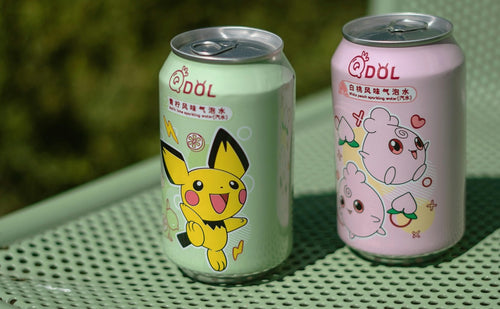
8 Themed Bars and Cafes You Need to Visit in Tokyo
Tokyo is famous for its creative and quirky themed bars and cafes, offering immersive experiences for locals and...
-

Tokyo Nightlife Guide: Shinjuku, Shibuya, and Roppongi Highlights
Tokyo’s nightlife is legendary, offering a mix of vibrant energy, entertainment, and unique experiences in some of it...
-
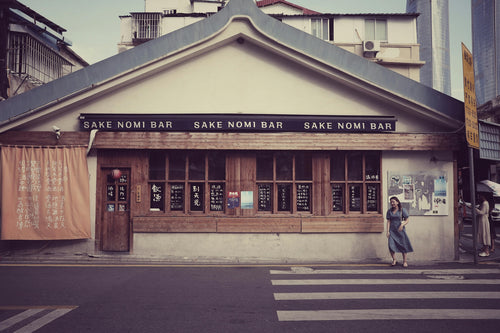
7 Best Japanese Sake Bars in Tokyo
Tokyo is home to some of Japan’s best sake bars, offering both locals and visitors an opportunity to explore the...
-

Top 6 Observation Decks in Tokyo for Scenic Views
Tokyo’s observation decks offer some of the best panoramic views of the city, giving visitors a chance to see th...
-
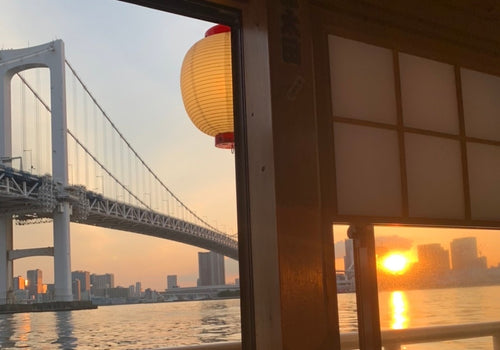
Night Cruises in Tokyo: Enjoy the City Views
Tokyo’s skyline is mesmerizing at any time, but experiencing it from the water on a night cruise adds a magical ...
-

Roppongi Art and Nightlife Guide
Roppongi is one of Tokyo’s most vibrant districts, known for its lively nightlife, sophisticated art scene, and ...
-
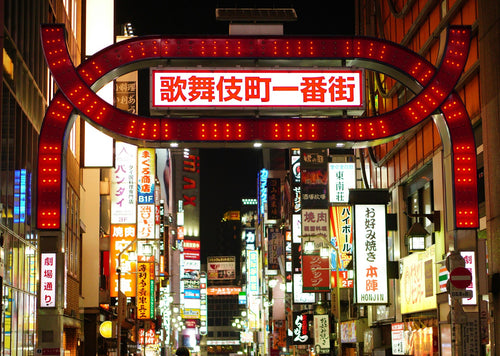
Nightlife Guide to Shinjuku Kabukicho
Shinjuku’s Kabukicho district, known as Tokyo’s “Sleepless Town,” is the center of nightlife in Tokyo. Renowned ...
-

6 Best Night View Spots in Tokyo
Tokyo at night is a breathtaking spectacle, with illuminated skyscrapers, iconic landmarks, and bustling streets that...
-

Top 12 Sake Breweries in Japan for Tasting and Tours
Japan’s sake culture is celebrated around the world for its depth, complexity, and rich history. Sake, or nihons...
-
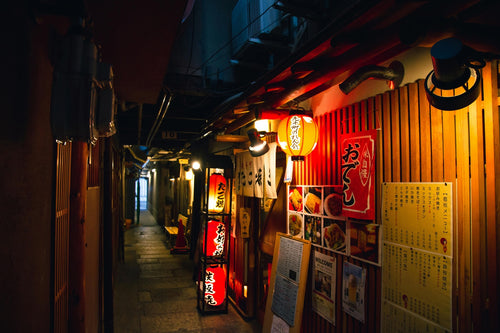
How to Enjoy a Night at a Japanese Izakaya
Japanese izakayas are casual, lively spots where locals gather after work to enjoy drinks, share small plates, a...
-

Exploring Karaoke Culture in Japan: 8 Best Places to Sing
Karaoke is an integral part of Japanese culture, offering a fun and entertaining way for friends, family, and even co...
-

5 recommended bars in Golden Gai
Golden Gai, nestled in the heart of Tokyo’s Shinjuku district, is one of the city’s most iconic bar districts. Known ...
-

10 Japanese Gardens You Should Visit for Tranquility
Japanese gardens are renowned for their beauty, tranquility, and intricate designs that reflect harmony with nature. ...
-

Japan’s Kimono Heritage: Symbolism, Style, and Where to See
The kimono, Japan’s traditional garment, is a beautiful and symbolic representation of Japanese culture. From its int...
-
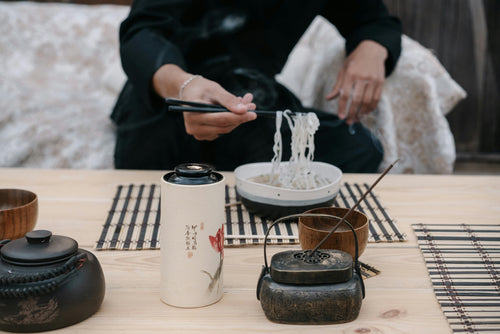
Etiquette Essentials for Visitors to Japan
Japan’s culture is rich in respect, politeness, and consideration, making etiquette an essential part of daily l...
-

7 Best Places to Discover Japan’s Samurai History
Japan’s samurai history is one of honor, skill, and deep cultural influence, stretching back centuries and leaving an...
-
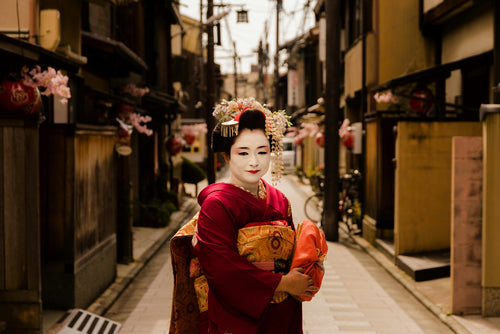
Geisha Culture in Japan: Myths and Realities
The world of geisha, Japan’s skilled performers and keepers of traditional arts, has long intrigued people around th...
-

Japan’s Unique Architecture: Top 8 Traditional and Modern Landmarks
Japan is renowned for its unique blend of ancient architectural heritage and cutting-edge modern designs. From c...
-

10 Traditional Japanese Festivals (Matsuri) You Can’t Miss
Japanese festivals, or *matsuri*, are vibrant celebrations of cultural heritage, featuring elaborate costumes, l...
-

Japan’s Three Great Onsen: A Guide to Famous Hot Springs
Japan is famous for its natural hot springs, or *onsen* (温泉), offering visitors a unique opportunity to relax and rej...
-

Japanese Art Exploration: Best Spots to Enjoy Art in Japan
Japan is a country rich in artistic heritage, from centuries-old traditional crafts to modern, innovative instal...
-

Guide to Japan’s Fireworks Festivals: When and Where to Go
Japan’s summer fireworks festivals, known as "hanabi taikai" (花火大会), are among the most anticipated events in th...
-
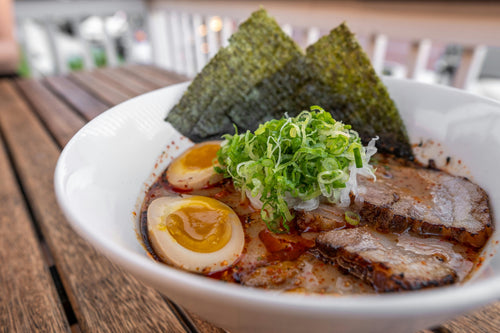
Where to Experience Ramen-Making Classes in Japan
Ramen is one of Japan’s most beloved dishes, with countless regional styles and flavors that attract food lovers from...
-

Power Spot Tours: Japan’s Famous Temples and Shrines
Japan is a land steeped in spiritual history, and visiting its temples and shrines provides not only a glimpse i...
-

UNESCO World Heritage Site Tour Guide in Japan
Japan is home to numerous UNESCO World Heritage Sites, each offering a glimpse into the country’s rich cultural herit...
-

5 Famous Japanese Castles: History and Highlights
Japan is home to some of the most beautiful and historically significant castles in the world. Built during the feuda...
-
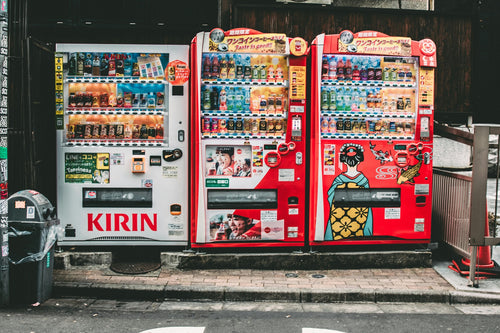
10 Unique Drinks to Try from Japanese Vending Machines
Japan is famous for its vending machines, offering an incredible variety of drinks that go beyond just soft drinks an...
-
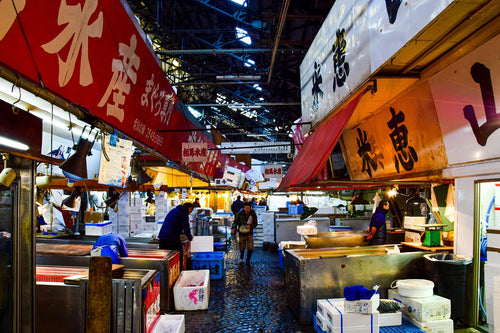
Tokyo Market Guide: Exploring Tsukiji and Toyosu Markets
Tokyo's Tsukiji and Toyosu Markets are must-visit spots for food lovers and anyone interested in Japan’s rich culinar...
-
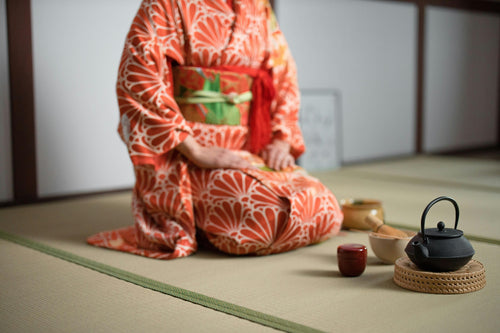
Experiencing Traditional Tea Ceremony in Tokyo
The Japanese tea ceremony, or "chanoyu," is a cultural experience steeped in tradition, aesthetics, and mindfulness....
-
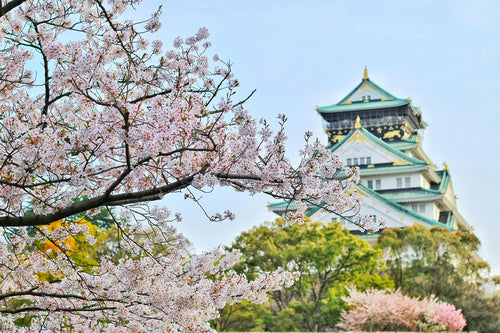
Top 7 Cherry Blossom Viewing Locations in Tokyo
Springtime in Tokyo is synonymous with the cherry blossom season, a breathtaking period when the city’s parks, rivers...
-

What is Onsen? A Guide to History, Benefits, and Etiquette
Onsen, Japan’s cherished hot spring culture, offers a unique blend of relaxation, scenic beauty, and deep-rooted trad...
-

What is Sake? Its Production Method and History
Sake is a traditional Japanese alcoholic beverage made from fermented rice. It has been enjoyed in Japan for over a t...
-

8 hot springs with beautiful scenery near Tokyo
Tokyo is a bustling metropolis, but just outside the city are some of Japan's most serene hot springs, or onsens, off...
-

Top 10 museum to visit in Tokyo
Tokyo is home to a diverse range of museums that cater to all interests, from art and history to technology and pop c...
-

9 Best Hot Spring and Bathhouse in Tokyo
Tokyo is known for its vibrant urban energy, but it's also a fantastic place to relax and rejuvenate in hot springs (...
-
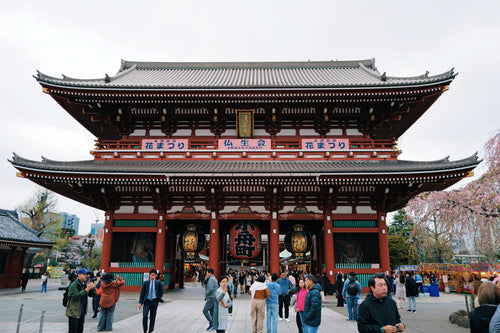
15 Famous Temples and Shrines to Visit near Tokyo
Tokyo and its surrounding areas are home to many famous temples and shrines that showcase Japan's rich spiritual and ...










































